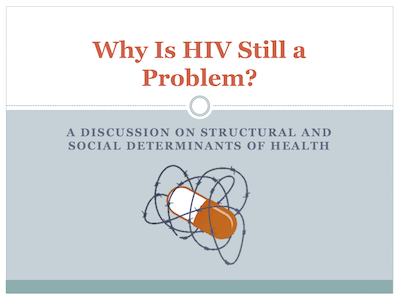Objectives for Module 3:
- Discuss examples of “structural determinants” and “social determinants” of health that drive the HIV epidemic
- Discuss the difference between individual, structural, and social interventions
- Look at examples of structural and social interventions for HIV prevention
Current HIV prevention science may theoretically have the potential to end epidemics, but even our most promising prevention tools cannot overcome laws, policies, and structural barriers that limit access to healthcare and perpetuate epidemics within our most marginalized communities. Government underinvestment in HIV prevention, interventions that are not cost effective, unfair insurance practices, being uninsured or underinsured, overly complicated healthcare systems—any number of these common barriers to healthcare can make it impossible for individuals to access biomedical prevention tools, including PrEP and PEP. Social barriers—including various forms of stigmatization and criminalization of people living with or highly vulnerable to HIV— can also greatly complicate access to prevention services within a community. Other widespread community challenges such as homelessness and poverty can create insurmountable hurdles for individuals trying to access the services they need.
Module 3 provides advocates with an overview of social and structural determinants of health—what they are and how they keep community members from accessing comprehensive HIV prevention. We also look at some common barriers and the laws and policies that tend to perpetuate them. For more on how to use community-led policy advocacy to remove these barriers, please check out HIV Activist Learning Module 4: Using Policy Advocacy to Remove Barriers to Comprehensive HIV Prevention.

